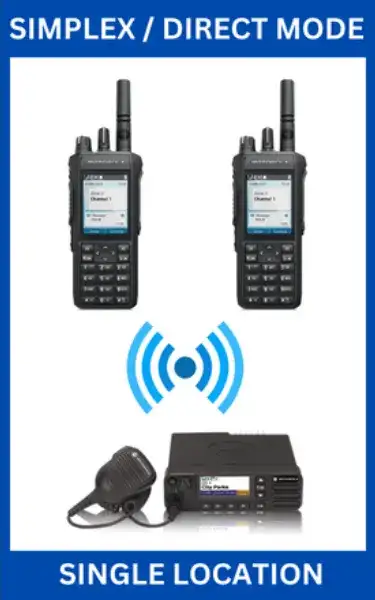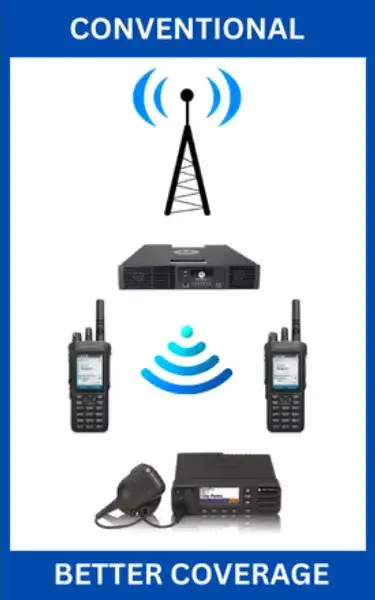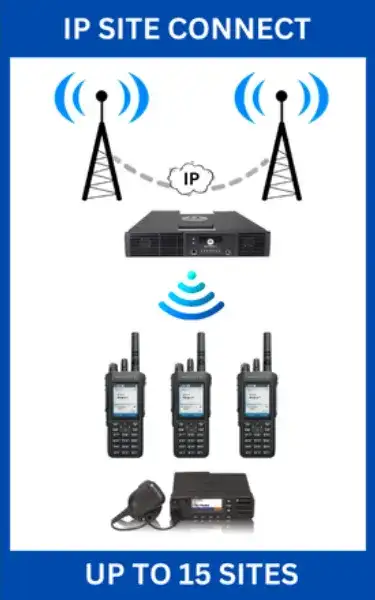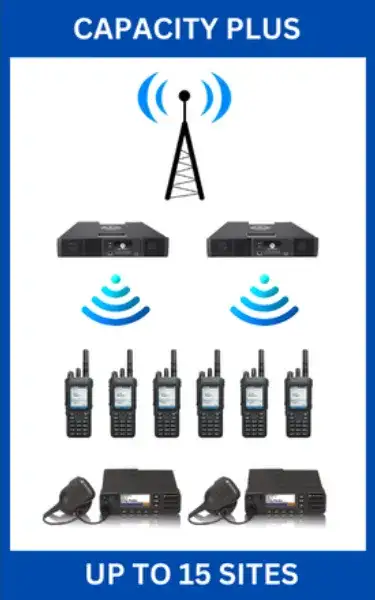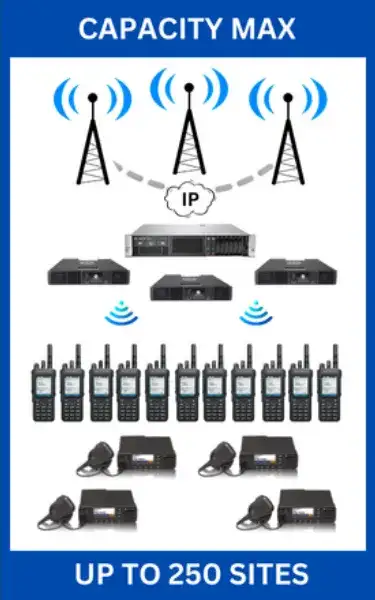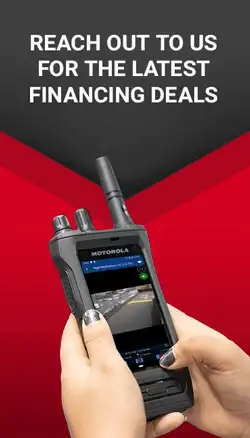Motorola Radio Systems | MOTOTRBO Digital Two-Way Infrastructure
Harnessing the Power of MOTOTRBO: Advanced Digital Communication for Modern Enterprises
Motorola’s MOTOTRBO radio systems stand at the forefront of digital communication solutions, catering to modern enterprises’ dynamic needs. As an industry leader, MOTOTRBO seamlessly blends the robustness of traditional two-way radios with cutting-edge digital technology, ensuring crystal-clear voice clarity, integrated data communication, and extended range. With its innovative features, it promises enhanced operational efficiency and real-time collaboration, making it the go-to choice for businesses aiming for uninterrupted connectivity.
The most common MOTOTRBO two-way radio infrastructure system types are:
Simplex (Radio to Radio) Direct Mode
Single Location / Very Few Users / Close Proximity
Simplex direct mode, often referred to as “radio to radio” or “simplex communication,” is a type of two-way radio operation where two or more radios communicate directly with each other on the same frequency without the use of a repeater or infrastructure.
As an example, a small manufacturing facility may have workers use MOTOTRBO in Direct Mode to coordinate their activities. The loading dock can call the foreman when parts have arrived, and the factory manager can call down to the shop floor to prioritize an urgent order.
Conventional Repeater
Single Site / Up To 200 Users*
A conventional two-way radio system with a repeater is a step up from basic simplex (radio to radio) direct mode operation. In a nutshell, end user radios communicate through a high-power repeater, giving better coverage and more centralized control.
A conventional repeater is an integral component of a two-way radio system, designed to amplify and rebroadcast signals, ensuring extended coverage and optimal clarity. In the realm of two-way radio communication, Motorola’s conventional repeaters play a pivotal role in eliminating dead zones and boosting signal strength, especially in challenging terrains or dense urban landscapes.
IP Site Connect
Up To 15 Sites / Up To 200 Users*
Leverage your IP network with MOTOTRBO IP Site Connect to amplify voice and data functionalities by interconnecting conventional repeaters. Build a unified network that integrates up to 15 repeaters, spanning multiple geographical areas or simply bolstering signal strength within a single location by strategically locating repeaters in areas that require more coverage and then linking them together via an IP network.
Capacity Plus
Up To 15 Sites / Up To 1600 Users Per Site*
Expand the capacity and extend the coverage of MOTOTRBO with this entry-level digital trunking system. With multi-site Capacity Plus (formerly Linked Capacity Plus or LCP for short) you can connect up to 15 sites, each with up to 8 voice and data repeaters – plus up to 12 dedicated data repeaters via an IP network. The primary difference between Capacity Plus and IP Site Connect operation is that Capacity Plus introduces trunking functionality which expands system capacity.
Capacity Max
Up To 250 Sites / Up To 3000 Users Per Site*
Motorola’s MOTOTRBO Capacity Max represents the pinnacle of digital trunking systems, tailor-made for contemporary communication demands. Rooted in Motorola’s long-standing expertise in trunked radio solutions, Capacity Max goes beyond traditional systems to offer an adaptive, efficient, and scalable communication platform for businesses of all sizes. With its digital architecture, it ensures that organizations are well-equipped to manage their vast communication channels seamlessly.

